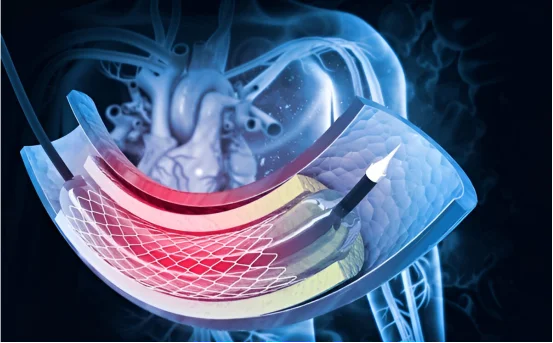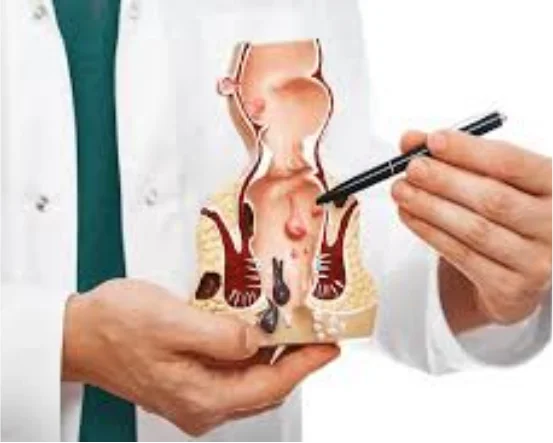Percutaneous Coronary Intervention (PCI) also referred to as coronary angioplasty, is an invasive procedure to treat narrowed or blocked coronary arteries. PCI address CAD complications by unclogging arteries whose blood flow is restricted or stopped. Cardiovascular disease remains one of the leading causes of mortality in the world and having insight on the reasons necessitating PCI can enable better preventive measures, prompt diagnosis, and effective treatment. Understanding of causes for percutaneous coronary intervention is crucial for anyone facing heart-related issues
As with other non-surgical procedures, the pci begins with catheterization. Catheterization starts with threading the catheter through blood vessels in the body until reaching the heart where there is a narrowed artery. The catheter has a balloon attached to it and upon reaching the constricted artery, the balloon is inflated to widen the artery. Additionally, it is common to place a stent within the artery to keep it open after the balloon is deflated.
It is used primarily to treat patients with:
- Angina (chest pain)
- Blocked or narrowed coronary arteries
- Heart attacks (particularly ST-elevation myocardial infarction or STEMI)
- Preventing recurrent blockage post bypass surgery
Main Causes for Percutaneous Coronary Intervention Surgery
- Coronary Artery Disease (CAD)
Primary Causes for Percutaneous Coronary Intervention Surgery
Coronary artery disease remains the leading reason for PCI. CAD develops due to the narrowing or blockage of the coronary arteries that supply blood to the heart muscle because of atherosclerotic plaque build up. This plaque consists of cholesterol, fatty materials, cellular byproducts, calcium, and fibrin.
Key triggers of CAD include:
- Dyslipidemia/High cholesterol (specifically LDL)
- Hypertension (high blood pressure)
- Tobacco use/Smoking
- Diabetes mellitus
- Inactivity/Sedentary lifestyle
Obesity
The need for PCI arises when one or more arteries are critically blocked (normally over 70%) to stop further damage and heart attack.
- Acute Myocardial Infarction (Heart Attack)
Emergency PCI Indication
Heart attacks result from a sudden blockage of coronary arteries, usually due to plaque rupture and blood clot formation. This results in the oxygen supply to the muscle being cut off, leading to tissue death.
For such emergencies, Primary PCI (PPCI) is the best treatment option as it quickly opens the artery, reduces damage to the heart, and increases chances of survival.
Signs of a heart attack include:
- Chest pain that is severe and persistent
- Difficulty breathing
- Feeling nauseous and dizzy
- Excessive sweating
- Fatigue
- Unstable Angina
Angina is defined as chest pressure or pain which can be experienced while resting or during very light physical activities and is not alleviated by resting or taking medication. It is considered highly dangerous as it can lead to a heart attack and usually indicates that a person is likely to suffer from serious cardiovascular complications.
In this situation, angioplasty is generally indicated to minimize the risk of perforation or complete blockage of the artery and decrease heart attack chances.
- Restenosis After Previous PCI or CABG Surgery
Patients who have previously had PCI or CABG surgery performed are at risk of developing a condition called restenosis. Restenosis occurs when arteries that were previously treated become narrowed again. This is due to:
- Multiple Vessel Disease or Complex Lesions
Patients with complex lesions, such as multiple blockages of coronary arteries, bifurcation lesions, calcified plaques, or chronic total occlusions, frequently need PCI performed on one or more of the affected vessels.
Due to progressive developments in catheterization and its techniques, patients who were only candidates for open-heart surgery are now able to undergo PCI.
-
Lifestyle and Genetic Risk Factors Leading to PCI
While the direct structural or pathological causes of PCI are issues within the arteries, changes related to one’s lifestyle or genetics are highly influential to the development of such conditions.
Common contributing factors:
- Family history of heart disease
- Smoking and tobacco use
- Physically inactive or sedentary lifestyle
- Diet high in trans fat, salt, and sugar
- Poorly controlled diabetes
- Chronic kidney disease
- Psychological stress and anxiety
Such factors tend to influence and augment atherosclerosis and the likelihood of requiring PCI in the future due to these changes.
Diagnostic Tools to Detect PCI Need
Diagnostic tests utilized to determine necessity for performing PCI surgery include:
- Comprehensive evaluation and assessment of the heart rhythm via an Electrocardiogram- ECG (or EKG).
- Cardiac enzyme tests for suspected heart muscle damage.
- Echocardiography for evaluation of heart function.
- Coronary Angiography: The most efficient way to identify blocked arteries and strategize for PCI.
An Ounce of Prevention
While PCI serves as a major medical breakthrough, it remains a surgical intervention. Seeking to avert the condition’s underlying causes is preferable. Here’s how to reduce your risk:
- Follow a heart-healthy dietary pattern prioritizing fruits, vegetables, and lean protein sources
- Practise regular physical exercise
- Refrain from smoking and moderate alcohol consumption
- Control as well as treat blood pressure and cholesterol
- Adopt effective stress relief methods, like meditation or guided counseling
Family history of cardiovascular diseases warrants proactive health monitoring
Conclusion
Cardiovascular diseases, acute myocardial infarction (heart attack), angina, and post-treatment stenosis are some of the conditions that may necessitate a causes for percutaneous coronary intervention (PCI) surgery. A common denominator to these…a predominant factor is atherosclerosis, which is heavily reliant on personal choice and hereditary factors.
Comprehending why surgery is needed allows one to have a better chance of detecting issues early, receiving timely treatment and emphasizes the need for taking proactive measures. Simply put, living a healthy lifestyle along with routine tests makes the chances of undergoing this intervention unlikely.























